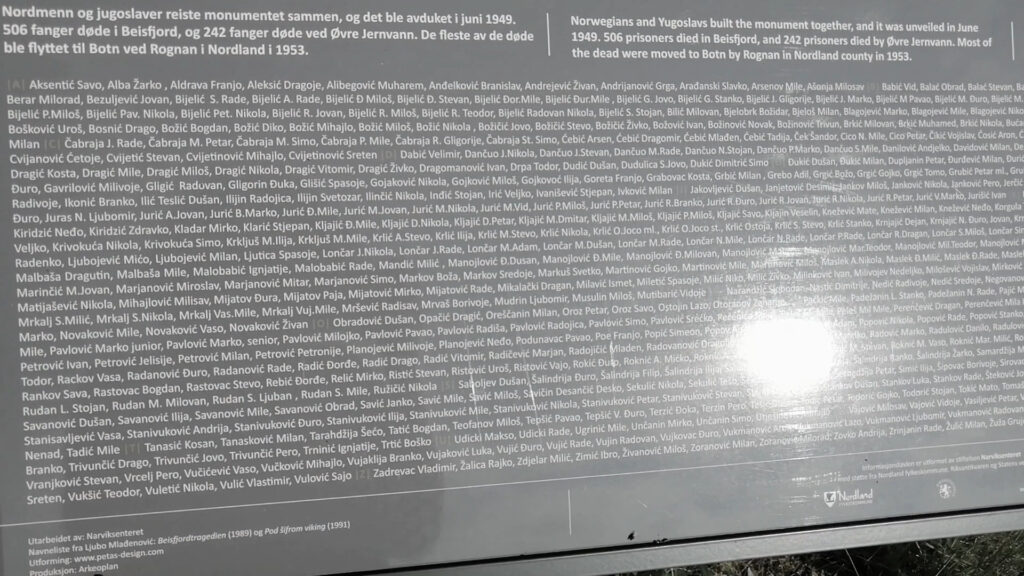As for many participants, the topic of forced labor and prison camps in Norway was rather new to Nora Pedersen. Indeed not so many people are aware of the very existence of such camps and the horrible conditions they had. Through the research in the archives and local libraries she managed to learn more about it and to transmit this knowledge in the film.
But, as she said: „It is not an educational film; it is a film to make you think.” And – I would also say – to make you feel. Nora focused on the nature around the camps. We see calming landscapes of Norway: distant mountains, wind moving the treetops, ants crawling in the grass. These are all places around the Beisfjord camp.
The second part of the film starts with a picture of water; now we are at Bjørnfjell. We see the lake that was only a few meters away from the camp, some stone-formations that were used as a shooting-position and a cross which the prisoners made themselves. There is not a lot left from the camps, so Nora has chosen a focus on the nature, because she wanted to catch something that was there as the prisoners were there too; this is something, which is close to its original form.
Not only the visual dimension of the film is important; it can also be seen as a critique to the way people view and retell history, especially in Norway:
„I mention the Norwegian guards because I feel like they get less of the blame than the Germans. It might be just my opinion, but it was something that made me react when I read the transcript of the interrogation with Sandra Kristensen, that a lot of the people around there talked to the guards and befriended some of them, it made me somewhat annoyed. How could anyone befriend someone who hurt and tormented people on the daily?”
Sandra Kristensen was a woman living in Beisfjord, not too far away from the camp – she could see the camp from the windows of her home. Sandra was a historic person Nora researched about during the project. But what she emotionally experienced, when she visited the camp, made her chose the victim perspective for her film, to put people we lost at the center of the story.
